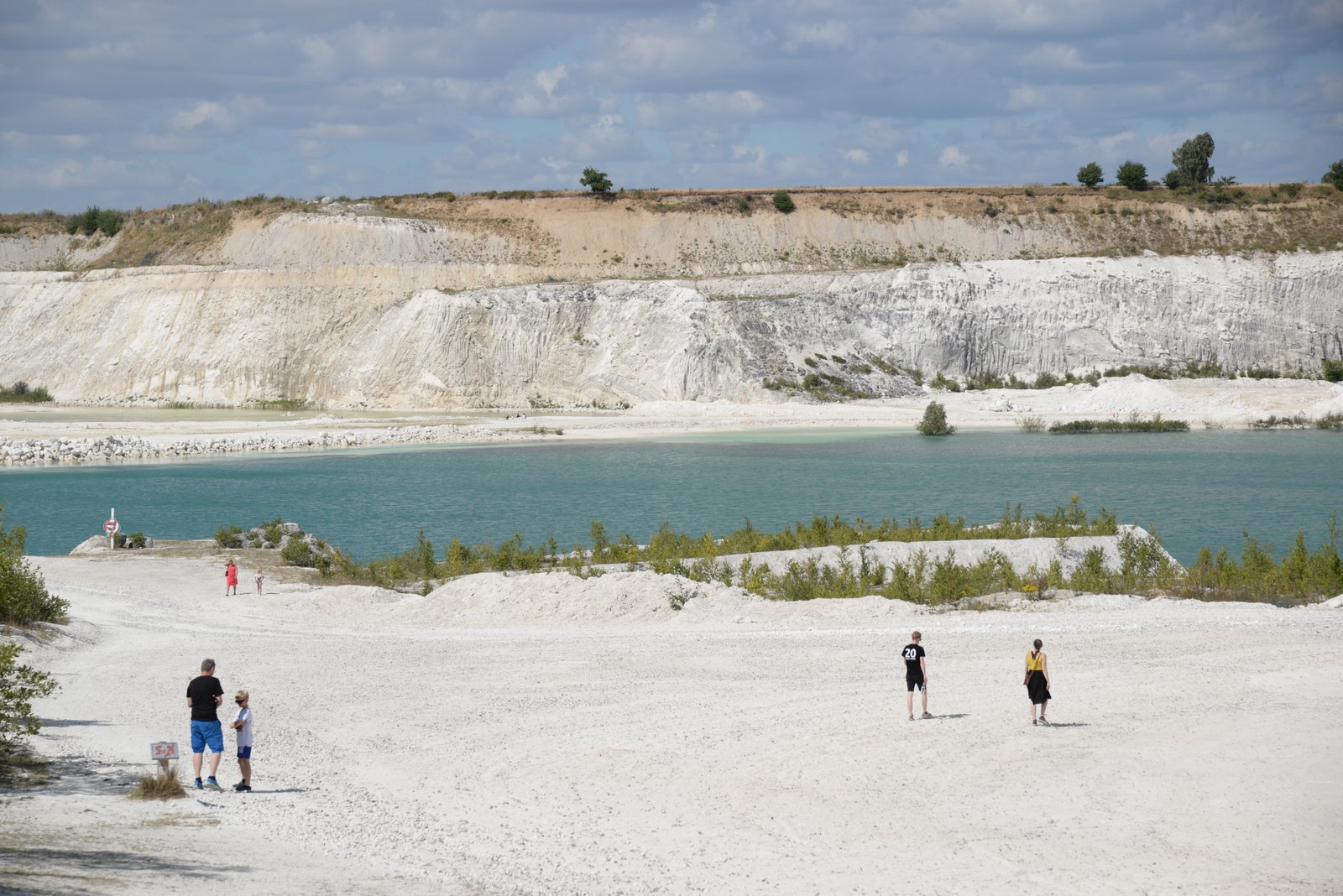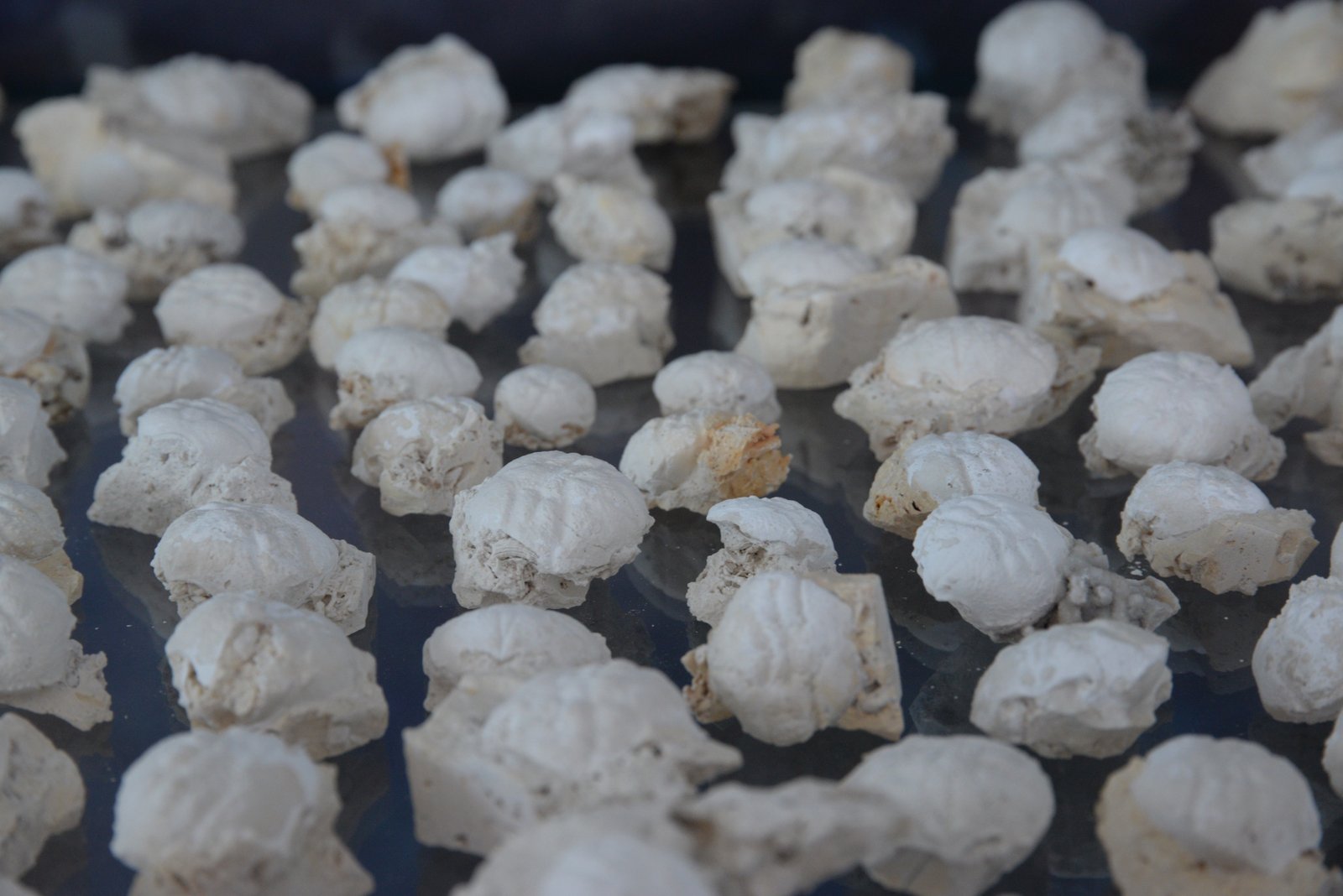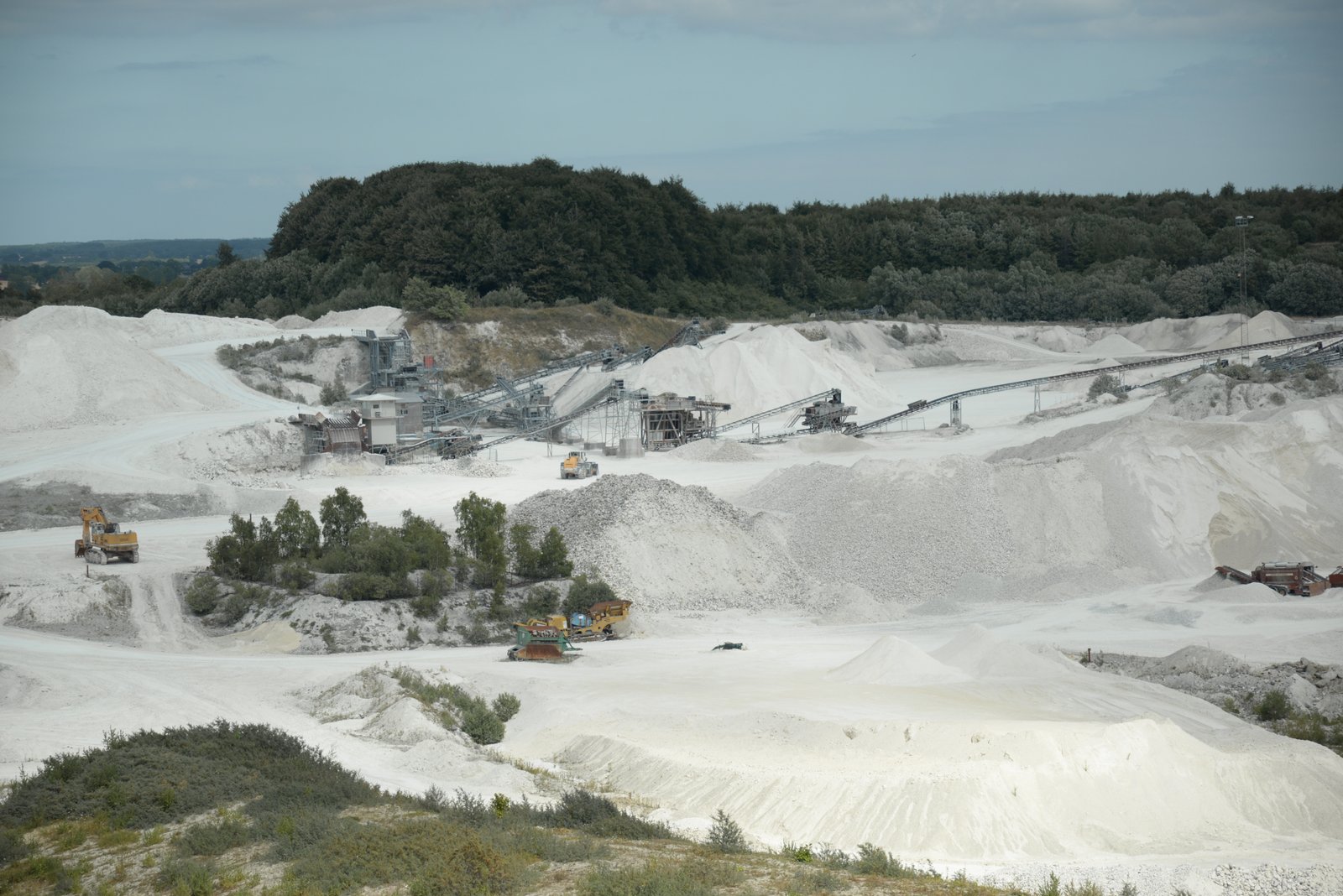Sixty-five million years ago, a meteorite killed the dinosaurs, and two-thirds of the known species with them. It turned Earth into a wasteland. But Earth soon recovered, mammals took over rule over the land on Earth, and life again flourished in the seas.
In the last article, we visited Stevns Klint, one of the places which proved the dino-killer meteorite. Just 30 km west of Stevns Klint is the proof of how fast life recovered: The huge fossil coral reef of Faxe Chalk Quarry.
At 63 million years, the Faxe reef is only two million years younger than the great extinction. And it flourished with life.

– Dad, what’s this?
– Its old, son.
– But what is it?
– It’s a…sea fossil.
– You just try to hide that you don’t know! I will ask at the museum if it is a Dendrophyllia candelabrium or a Hercoglossa danica!
This big reef is really a big, big web of the coral Dendrophyllia candelabrium, which as the name says reminds of a huge candelabra, with round, slender stems branching out into a labyrinth of arms. These corals are still with us, but they do not live like we typically think of coral reef, bathing in sun and colors. Rather, they reside in the deep dark, below one hundred meters depth.
Back then, Faxe was a deep-sea bottom, where the corals slowly built up a reef through the millennia, and then were buried by a slow rain of chalk, tiny shells from algae which lived in the shallower part of the water.
Crabs, lobsters, sea urchins, snails, sharks, octopus shells, corals, swamps – all the animals that lived on the reef make it a treasure box of fossils. Most precious are the nautiluses, the last surviving octopuses with shells, remnants of the ammonites that once roamed the sea. More than 500 different animal species have been described from Faxe.

Crabs! Crab shells like these in the Faxe Geomuseum, are among the most common fossils in the chalk.
You can admire them in the Geo Museum Faxe, which sits just next to the quarry, and with a panorama view over it. The museum tells the geological story of Kalklandet, the Chalk Land, which the Danes call this southwestern corner of Sjælland, but which, geologically, actually makes up most of their hyggelige little country. The museum covers the story of the chalk rom the latest Cretaceous through the Paleocene, a time span from 71 to 61 million years. It shows the difference in fauna before and after the big extinction:
The Cretaceous fossils include bone remnants from mosasaurs, large marine carnivore reptiles that looked kind of like large varan lizards with paddles. They were the top predators in the late Cretaceous ocean. Then, they vanished with the dinosaurs, and the fossil fauna at Faxe reminds us quite of the tropical sea today.

Oldies from before the crash: Mosasaur bones from Stevns Klint.
Most of the fossils at Faxe are not the shells themselves. Instead, they are casts of the inside and outside of the shells. This is because the shells consisted of aragonite, a less stable form of calcium carbonate. After burial, the shells got buried in the fine chalk mud, which hardened to chalk stone, while the aragonite gradually dissolved, leaving a void with the shape of the shell.
As the name says, Faxe is an active chalk quarry. Cooperation between the diggers and the museum offers a steady stream of fossil food for science. Only a part of the quarry is mined at each time. The rest of the quarry is open for anyone who wants to try their luck in fossil digging, and the museum even lends out hammers.
I grabbed one and went treasure hunting, following the many kids who pulled their dads around in the quarry. Granted, luck during an hour of digging was limited to some pieces of sea urchins and the all-over-the-place corals, but it was still fun to let my inner fossil hound kid loose for a while!
How To Get There:
Faxe Chalk Quarry is around 80 km south of Copenhagen, and easy to reach by car: Follow E20 south from Copenhagen for most of the journey, then take left onto Route 154 to Rønnede and to Faxe. The drive is around one hour, and there is a parking site at the museum.
Denmark is the bicycle country, and bicycle roads often follow the main roads. Follow Route 151 south from Copenhagen, through Køge and to Rønnede, and then Route 154 to Faxe. It takes around 3,5 hours to bike from Copenhagen.
-
This post is partly based on the books Danekræ by Niels Bonde and co-authors and Naturen i Danmark – Geologien by Gunnar Larsen and Kaj Sand-Jensen.





